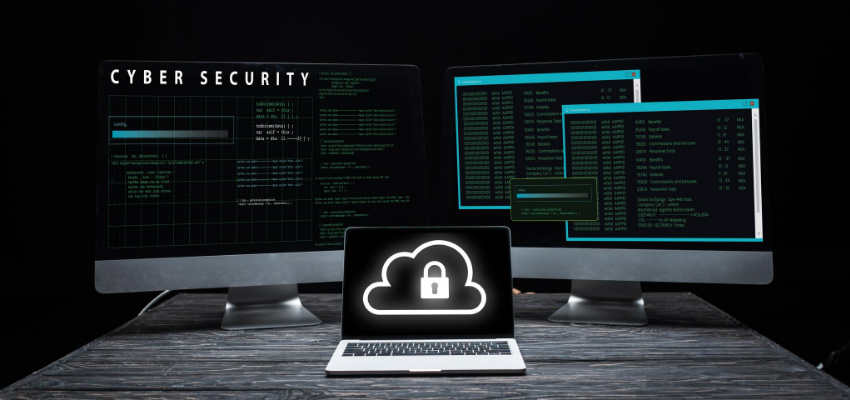Show:
Your Comprehensive Beginner’s Guide to Data Loss Prevention
Data loss prevention (DLP) is a hot topic in the world of information security. Companies are increasingly aware of the risks associated with data breaches, and they’re looking for ways to protect their sensitive information. DLP is a key component of any effective data security strategy.

In this blog post, we’ll give you a comprehensive overview of DLP, including what it is, how it works, and why it’s so important. By the end, you’ll have a solid understanding of this critical security measure and be able to make an informed decision about whether or not it’s right for your organization.
Data loss prevention (DLP)
Data loss prevention (DLP) is a strategy to protect sensitive and confidential data. It monitors, detects, and prevents unauthorized use of company data while in stored or transit form. DLP typically uses automation to help stop data exfiltration threats, including malware that can bypass firewalls. It also scans files for appropriate labeling and security measures, such as encryption and access control. The end goal is to gain visibility into what’s happening with sensitive data across networks, systems, applications, and users so an organization can keep it secure.
Why is DLP important for businesses and organizations of all sizes?
Data Loss Prevention (DLP) is an essential security measure for businesses and organizations of all sizes. DLP takes proactive measures to restrict unauthorized access and monitor data as it transfers between networks, ensuring that any confidential or sensitive information is kept safe and secure. By employing a comprehensive DLP strategy, businesses can better protect their data from external threats such as hackers, malware, and other malicious actors while also mitigating potential internal weaknesses, such as employee negligence or even malicious intents. Through the utilization of advanced technologies such as encryption, content filtering, user activity monitoring and various cloud-based solutions, businesses can rest assured their data remains safe with the highest levels of security. As such, DLP should be seen not only as a necessary protection for all businesses but also invaluable in terms of preventing data leaks that could result in costly consequences for any company or organization.

What are the most common types of data loss incidents and how can they be prevented with DLP solutions?
Data Loss Prevention (DLP) is a widely-used security technology that helps organizations detect, prevent, and respond to data loss incidents. The most common types of data loss include hacking and cyber attacks, malware, physical theft or unauthorized access of devices and removable media, printing sensitive documents in public locations, cloud storage leakage, and accidental deletions.
To prevent these incidents from happening in the first place, DLP solutions utilize a combination of methods such as user authentication protocols, encryption of confidential information, monitoring anomalous behavior on networks and endpoints along with regular assessments for any policy violations. Both OpenID Connect (OIDC) and Security Assertion Markup Language (SAML) are authentication protocols that enable identity providers (IdP) to validate users and control their access.
They each have their own method for managing the virtual identities of authenticated users, which are utilized to authorize or deny access to secured applications.
Additionally, DLP solutions provide deep visibility into the true origin of data loss events – enabling organizations to identify suspicious activity quickly and effectively enforce preventive measures to protect their company’s sensitive information from becoming vulnerable.
How does a DLP solution work and what features should you look for when choosing one for your business or organization?
A data loss prevention (DLP) solution can be a critical tool for businesses and organizations looking to secure their information. DLP uses policies, processes, and technologies to ensure that sensitive data cannot be illicitly accessed or shared. When selecting a DLP solution for your business or organization, there are several features worth seriously considering. These include the ability to quickly detect threats across multiple data sources, support for different categories of at-risk content, and automated remediation capabilities in case of an incident. It is also important to look at response times – both in terms of network performance when running scans as well as speed of response from the provider’s support personnel. Ultimately, these considerations will help you make an informed decision about the right DLP solution for your needs.
Implementing a DLP solution – tips and best practices
When it comes to implementing a DLP solution, there are a few best practices that should be followed.
First, work closely with all IT teams involved such as the network administrator, database administrator, and any compliance officers in order to make sure the DLP policies are accurately implemented.
Second, keep the policies up-to-date by regularly auditing the DLP system so that you can detect any data leakage and address any inconsistencies before they become an issue.
Finally, make sure to conduct regular employee training in order to educate them on how to use the system properly and minimize risk of accidental access or data leakage. By following these tips, organizations can ensure they effectively implement their DLP solution while optimally mitigating risks of data loss.
Summary
Data loss prevention (DLP) is a subset of security methods to ensure that only authorized users can access or transfer sensitive data, and any suspicious and unauthorized attempts are appropriately restricted. DLP solutions scan for sensitive data across networks and contain, monitor, detect, alert, and block files from leaving the system at any given time. These solutions also assess risks associated with a file before it gets transferred to another location. DLP solutions can protect against accidental distribution of confidential information as well as malicious attacks. As such, companies should consider investing in a good data loss prevention system in order to keep their data secure and to protect them from legal consequences like financial losses due to non-compliance with privacy regulations.

 Return to Previous Page
Return to Previous Page








